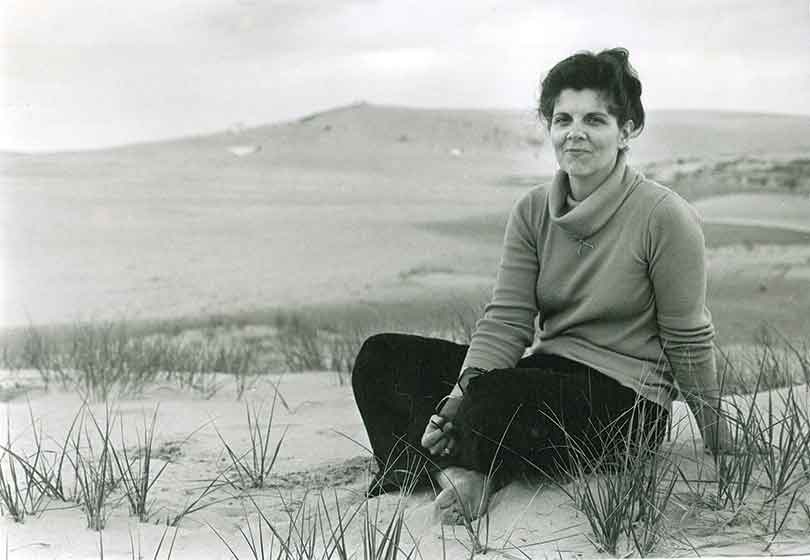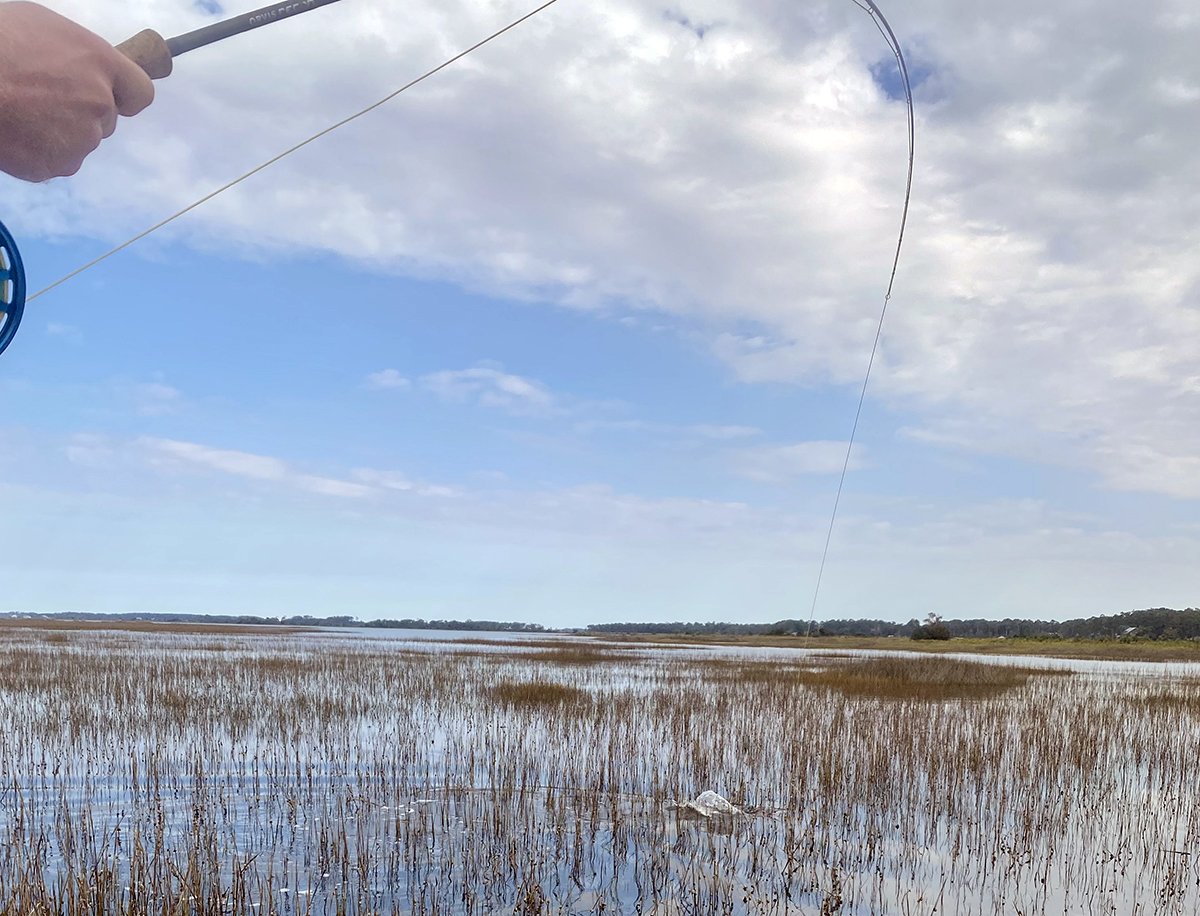
It didn’t go unnoticed by Hannah Bunn West that the children’s book she helped author on the history of Jockey’s Ridge was released while protections for the National Natural Landmark are at risk on the state level.
That threat is similar to what prompted the largest sand dune system on the East Coast to be saved and ostensibly permanently protected 50 years ago.
Supporter Spotlight
On Aug. 15, 1973, siblings Ann-Cabell, Inglis and Gibbs Baum of Kill Devil Hills saw bulldozers at Jockey’s Ridge and ran home to tell their mother, Carolista Baum. In protest, their mother stood in front of that bulldozer, forcing the operator intent on removing sand to abandon his post.
Carolista Baum rallied the community to save the dunes, and she co-founded the group People to Preserve Jockey’s Ridge. The group raised money, held petition drives and lobbied state and local officials. The effort paid off. In 1975, Jockey’s Ridge was designated as a North Carolina state park.
Ann-Cabell Baum spent her youth in Nags Head across from Jockey’s Ridge. She is now vice chairwoman of the Friends of Jockey’s Ridge State Park.
“We were 6, 5 and 3½ the summer of 1973 when we were playing and saw the bulldozer at the back side of the dune,” Ann-Cabell Baum said.
“Jockey’s Ridge means so much to our family, it’s where we as children played every summer day and ran up and rolled down, requiring a swim in the ocean to get some of the sand off before our nightly baths,” she said. “As a kid we thought all kids had a sand dune, and we shared ours with all the visitors to the beach. We always would talk to other kids that we’d meet at the ridge and share with them the best place to jump and catch the most air as well as not leaning too far forward when you ran down, otherwise you might faceplant.”
Supporter Spotlight
North Carolina Office of Archives and History Historical Research and Publications Supervisor Ansley Herring Wegner, who came into the role in October last year, thought this was an important part of North Carolina history and decided early on in her new position to pursue a book on the Baums and Jockey’s Ridge.
Wegner has been with the archives office since 1994. She was administrator of the Highway Historical Marker Program since 2014, before taking on the supervisor role last fall.
The conversation to make the story a children’s book was fueled by the attention social media posts would garner when Wegner would share the story of Carolista Baum on the anniversary of the day she stood in front of that bulldozer at Jockey’s Ridge, and began in earnest during the process to establish a historical marker for Carolista Baum, which was installed in July 2023 in Nags Head.
“I thought, I would love to do a children’s book about this because it’s a story for children. It’s a story about children getting things done in their community with their mom’s help,” she said.
Wegner said the archives office has always published historical books, and has recently launched a series for young readers. Her hope is that these children’s books expand their audience and teaches more people about North Carolina history.
Wegner said that, within a week of becoming supervisor, she met with Ann-Cabell, who resides in Raleigh as well, to talk about getting the book written.
“It was my first round with a children’s book, and I just felt like it would be a good one to do,” Wegner said. “It’s an important story. It’s environmental history. It’s children using their voices and getting things done.”
Baum found the watercolors of Outer Banks artist Larry McCarter that were used for the book. Book designer Sheila Barrett Carroll suggested West write the story because of the book “Remarkable Women of the Outer Banks” that West had published in 2022.
West agreed.
West grew up on the Outer Banks, attended Manteo High School and graduated from University of North Carolina Wilmington. She taught second, third and fourth grades before becoming a freelance writer, publishing in 2022 her book, “Remarkable Women of the Outer Banks,” which features a chapter on the late Carolista Baum, who died in 1991.
West told Coastal Review earlier this week that she met with Ann-Cabell Baum to hear her perspective of that day her mother stood in front of the bulldozer for the chapter on Carolista Baum West included in her book. West and Baum then collaborated on the children’s book.

West explained that in addition to being asked to adapt that chapter for an upper elementary-age reader, she has developed lesson plans and classroom activities to accompany the book for teachers to use as part of the North Carolina curriculum.
“Save Our Sand Dunes” is accessible for everyone from lower elementary, through upper-middle high school, and adults would even enjoy it, West said, and there’s what she called a “really neat mix of visuals” including illustrations, watercolors, photographs, graphics, the bumper stickers they sold to purchase the sand dunes that were privately owned at the time, and at the end, a page for the reader’s own Jockey’s Ridge scrapbook.
West said she wanted to focus on the children’s initiative to save the dune, rather than the legislative work that is heavily featured in her book.
“I wanted the main takeaway of this story to be how it was the three Baum children that really got the ball rolling, and even if you’re young or small, that your voice matters, especially when it comes to protecting the environment or your community or the people around you,” West said, adding she really wanted to drive the point home that kids made such a big difference in this story.
In thinking about what would really connect with young readers, she developed the narrative of the day the children went up on the dune and saw the bulldozer and then witnessed their mother stand in front of the heavy equipment.
Now herself the mother of two, ages 4 and 7, West said many of the parents in her circle have been receptive of the book.
“It’s so timely, such coincidental timing to that we have a book coming out called ‘Save Our Sand Dunes’ and there’s issues happening right now with Jockey’s Ridge.”
She’s referring to the protections for Jockey’s Ridge under the Coastal Area Management Act that are in jeopardy because of a dispute between the Coastal Resources Commission that is legislatively empowered to write the rules, in this case protections for Jockey’s Ridge as a designated Area of Environmental Concern, and the Rules Review Commission, a panel empowered to review and either approve or reject rules.
In October, the rules commission axed 30 longstanding Coastal Resources Commission-enacted rules from the state administrative code, including the AEC for Jockey’s Ridge. Since then, there has been a back and forth between the two commissions over 16 temporary rules the CRC subsequently approved to reinstate what it said were the most critical rules that had been rejected.
The Rules Review Commission then rejected those rules earlier this month over language used, particularly the word “unique,” in describing the sand dune system. The CRC met Thursday to discuss the rejection and heard from several residents fighting again for the dune’s protection, including West and Baum.
The slogan for the campaign to save Jockey’s Ridge in the 1970s was “Jockey’s Ridge for all the People,” West said. “The message is that this is a space for everyone to enjoy, rather than have private developers profit off of it. It’s a space for all the people to enjoy.”
West continued that she thinks that’s the main worry right now with Jockey’s Ridge.
“People’s fear is that it’s going to pave the way for people to be able to develop not necessarily on (the park) because it is a state park but around the area of Jockey’s Ridge. We’ve just seen so incredibly much development on the Outer Banks recently, even in the in the last 10 years, I would say, and while people are becoming really disheartened by a lot of it,” she said.
West said she hopes to use the book to spread awareness of how the dunes were originally saved, so it can serve as a reminder to those who know the story of Jockey’s Ridge, or as a way to educate new residents.
Ann-Cabell Baum recalled writing a book about Jockey’s Ridge in the second grade, “but not quite as great as ‘Save Our Sand Dunes.’ I even made the cover and sewed the pages into the book as part of a class project.”
However, Ann-Cabell Baum continued, “my book wasn’t as beautifully illustrated nor were my pictures as gorgeous as those painted by Larry McCarter. Hannah did a wonderful job of job of taking the summer of 1973 and sharing all the events that unfolded through 1975. We all hope that as kids and adults alike read this book, they’ll become members of the Friends of Jockey’s Ridge and help us build the next generation of kids and adults to make sure Jockey’s Ridge is here for years to come.”
The book really highlights how special a place Jockey’s Ridge is to her family and to everyone in Dare County, and everyone that comes to visit,” Ann-Cabell Baum said.
Ann-Cabell Baum said that with all the concern now that sand may be removed from the dunes without AEC protections, “It’s super important now that everyone realizes protection of natural resources goes beyond just a designation, it’s truly a responsibility to our children and the generations to come that we preserve and protect this super special place.
“It’s all of ours to enjoy, and it’s also all of ours make sure we save it, time and time again, when it’s in jeopardy. And, when it’s in jeopardy like now, with the removal of the AEC, area of environmental concern, we have to raise a fuss, it’s our obligation to make sure we take care of Jockey’s Ridge State Park.”
Buy the book
“Save Our Sand Dunes” by By Hannah Bunn West with Ann-Cabell Baum and illustrated by Larry McCarter and Anne Marshall Runyon can be purchased through UNC Press, which is distributing the book for N.C. Office of Archives and History.







